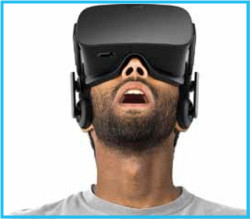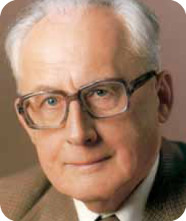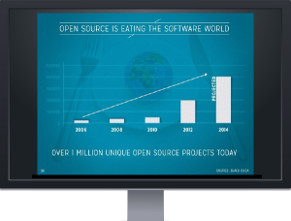
Jan 2, 2016 | Technology
By Kevin R. Donley, kevin@multimediaman.org
 On November 2, video game maker Activision Blizzard Entertainment announced a $5.9 billion purchase of King Digital Entertainment, maker of the mobile app game Candy Crush Saga. Activision Blizzard owns popular titles like Call of Duty, World of Warcraft and Guitar Hero—with tens of millions sold—for play on game consoles and PCs. By comparison, King has more than 500 million worldwide users playing Candy Crush on TVs, computers and (mostly) mobile devices.
On November 2, video game maker Activision Blizzard Entertainment announced a $5.9 billion purchase of King Digital Entertainment, maker of the mobile app game Candy Crush Saga. Activision Blizzard owns popular titles like Call of Duty, World of Warcraft and Guitar Hero—with tens of millions sold—for play on game consoles and PCs. By comparison, King has more than 500 million worldwide users playing Candy Crush on TVs, computers and (mostly) mobile devices.
While it is not the largest-ever acquisition of a game company—Activision bought Blizzard in 2008 for $19 billion— the purchase shows how much the traditional gaming industry believes that future success will be tied to mobile and social media. Other recent acquisitions indicate how the latest in gaming hardware and software have become strategically important for the largest tech companies:
• September 2014: Microsoft acquired Mojang for $2.5 billion. Mojang’s Minecraft game has 10 million users worldwide and an active developer community. The Lego-like Minecraft is popular on both Microsoft’s Xbox game console and Windows desktop and notebook PCs. In making the purchase, Microsoft CEO Satya Nadella said, “Gaming is a top activity spanning devices, from PCs and consoles to tablets and mobile, with billions of hours spent each year.”
• August 2104: Amazon acquired Twitch for $970 million. The massive online retailer has offered online video since 2006 and the purchase of Twitch—the online and live streaming game service—adds 45 million users to Amazon’s millions of Prime Video subscribers and FireTV (stick and set top box) owners.
Amazon’s CEO Jeff Bezos said of the acquisition, “Broadcasting and watching gameplay is a global phenomenon and Twitch has built a platform that brings together tens of millions of people who watch billions of minutes of games each month.”
• March 2014: Facebook acquired Oculus for $2 billion. Facebook users take up approximately 20% of all the time that people spend online each day. The Facebook acquisition of Oculus—maker of virtual reality headsets—is an anticipation that social media will soon include an immersive experience as opposed to scrolling through rectangular displays on PCs and mobile devices. According to Facebook CEO Mark Zuckerberg, “Mobile is the platform of today and now we’re also getting ready for the platforms of tomorrow. Oculus has the chance to create the most social platform ever and change the way we work, play and communicate.”
• March 2014: Facebook acquired Oculus for $2 billion. Facebook users take up approximately 20% of all the time that people spend online each day. The Facebook acquisition of Oculus—maker of virtual reality headsets—is an anticipation that social media will soon include an immersive experience as opposed to scrolling through rectangular displays on PCs and mobile devices. According to Facebook CEO Mark Zuckerberg, “Mobile is the platform of today and now we’re also getting ready for the platforms of tomorrow. Oculus has the chance to create the most social platform ever and change the way we work, play and communicate.”
What is VR?
Among the most important current trends is the rapid growth and widespread adoption of virtual reality (VR). Formerly of interest to hobbyists and gaming enthusiasts, VR technologies are now moving into mainstream daily use.
A short definition of VR is a computer-simulated artificial world. More broadly, VR is an immersive multisensory, multimedia experience that duplicates the real world and enables users to interact with the virtual environment and with each other. In the most comprehensive VR environments, the sight, sound, touch and smell of the real world are replicated.
Current and most commonly used VR technologies include a stereoscopic headset—which tracks the movement of a viewer’s head in 3 dimensions—and surround sound headphones that add a spatial audio experience. Other technologies such as wired gloves and omnidirectional treadmills can provide tactile and force feedback that enhance the recreation of the virtual environment.
 Recent events have demonstrated that VR use is becoming more practical and accessible to the general public:
Recent events have demonstrated that VR use is becoming more practical and accessible to the general public:
• On October 13, in a partnership between CNN and NextVR, the presidential debate was broadcast in VR as a live stream and stored for later on demand viewing. The CNN experience made it possible for every viewer to watch the event as though they were present, including the ability to see other people in attendance and observe elements of the debate that were not visible to the TV audience. NextVR and the NBA also employed the same technology to broadcast the October 27 season opener between the Golden State Warriors and New Orleans Pelicans, the first-ever live VR sporting event.
• On November 5, The New York Times launched a VR news initiative that included the free distribution of Google Cardboard viewers—a folded up cardboard VR headset that holds a smartphone—to 1 million newspaper subscribers. The Times’ innovation required users to download the NYTvr app to their smartphone in order to watch a series of short news films in VR.
Origins of VR
Virtual reality is the product of the convergence of theater, film, television, science fiction and digital media. The basic ideas of virtual reality go back more than two hundred years and coincide with the desire of artists, performers and educators to recreate scenes and historical events. In the early days this meant painting panoramic views, constructing dioramas and staging theatrical productions where viewers had a 360 ̊ visual surround experience.
In the late 19th century, hundreds of cycloramas were built— many of them depicting major battles of the Civil War—where viewers sat in the center of a circular theater as the timeline of the historical event moved and was recreated around them in sequence. In 1899, a Broadway dramatization of the novel Ben Hur employed live horses galloping straight toward the audience on treadmills as a backdrop revolved in the opposite direction creating the illusion of high speed. Dust clouds were employed to provide additional sensory elements.
Contemporary ideas about virtual reality are associated with 3-D photography and motion pictures of the early twentieth century. Experimentation with color stereoscopic photography began in the late 1800s and the first widely distributed 3-D images were of the 1906 San Francisco earthquake and taken by Frederic Eugene Ives. As with present day VR, Ives’ images required both a special camera and viewing device called the Kromskop in order to see 3-D effect.
3-D photography was expanded and won popular acceptance beginning in the late 1930s with the launch of the View-Master of Edwin Eugene Mayer. The virtual experience of the View- Master system was enhanced with the addition of sound in 1970. Mayer’s company was eventually purchased by toy maker Mattel and later by Fischer-Price and the product remained successful until the era of digital photography in the early 2000s.
Experiments with stereoscopic motion pictures were conducted in the late 1800s. The first practical application of a 3-D movie took place in 1922 using the Teleview system of Laurens Hammond (inventor of the Hammond Organ) with a rotating shutter viewing device attached to the armrest of the theater seats.
Prefiguring the present-day inexpensive VR headset, the so-called “golden era” of 3-D film began in the 1950s and included cardboard 3-D glasses. Moviegoers got their first introduction to 3-D with stereophonic sound in 1953 with the film House of Wax starring Vincent Price. The popular enthusiasm for 3-D was eventually overtaken by the practical difficulties associated with the need to project two separate film reels in perfect synchronization.
 Subsequent waves of 3-D movies in the second half of the twentieth century—projected from a single film strip—were eventually displaced by the digital film and audio methods associated with the larger formats and Dolby Digital sound of Imax, Imax Dome, Omnimax and Imax 3D. Anyone who has experienced the latest in 3-D animated movies such as Avatar (2009) can attest to the mesmerizing impact of the immersive experience made possible by the latest in these movie theater techniques.
Subsequent waves of 3-D movies in the second half of the twentieth century—projected from a single film strip—were eventually displaced by the digital film and audio methods associated with the larger formats and Dolby Digital sound of Imax, Imax Dome, Omnimax and Imax 3D. Anyone who has experienced the latest in 3-D animated movies such as Avatar (2009) can attest to the mesmerizing impact of the immersive experience made possible by the latest in these movie theater techniques.
 It is widely acknowledged that the theoretical possibility of creating virtual experiences that “convince” all the senses of their “reality” began with the work of Ivan Sutherland at MIT in the 1960s. Sutherland invented in 1966 the first head-mounted display—nicknamed the “Sword of Damocles”—that was designed to immerse the viewer in a simulated 3-D environment. In a 1965 essay called “The Ultimate Display,” Sutherland wrote about how computers have the ability to construct a “mathematical wonderland” that “should serve as many senses as possible.”
It is widely acknowledged that the theoretical possibility of creating virtual experiences that “convince” all the senses of their “reality” began with the work of Ivan Sutherland at MIT in the 1960s. Sutherland invented in 1966 the first head-mounted display—nicknamed the “Sword of Damocles”—that was designed to immerse the viewer in a simulated 3-D environment. In a 1965 essay called “The Ultimate Display,” Sutherland wrote about how computers have the ability to construct a “mathematical wonderland” that “should serve as many senses as possible.”
With increases in the performance and memory capacity of computers along with the decrease in the size of microprocessors and display technologies, Sutherland’s vision began to take hold in the 1980s and 1990s. Advances in vector based CGI software, especially flight simulators created by government researchers for military aircraft and space exploration, brought the term “reality engine” into use. These systems, in turn, spawned notions of complete immersion in “cyberspace” where sight, sound and touch are dominated by computer system generated sensations.
The term “virtual reality” was popularized during these years by Jaron Lanier and his VPL Laboratory. With VR products such as the Data Glove, the Eye Phone and Audio Sphere, Lanier combined with game makers at Mattel to create the first virtual experiences with affordable consumer products, despite their still limited functionality.
By the end of the first decade of the new millennium, many of the core technologies of present-day VR systems were developed enough to make simulated experiences more convincing and easy to use. Computer animation technologies employed by Hollywood and video game companies pushed the creation of 3-D virtual worlds to new levels of “realness.”
An offshoot of VR, called augmented reality (AR), took advantage of high resolution camera technologies and allowed virtual objects to appear within the actual environment and enabled users to view and interact with them on computer desktop and mobile displays. AR solutions became popular with advertisers offering unique promotional opportunities that capitalized on the ubiquity of smartphones and tablets.
Aside from news, entertainment and advertising, there are big possibilities opening up for VR in many business disciplines. Some experts expect that VR will impact almost every industry in a manner similar to that of PCs and mobile devices. Entrepreneurs and investors are creating VR companies with the aim of exploiting the promise of the new technology in education, health care, real estate, transportation, tourism, engineering, architecture and corporate communications (to name just a few).
Like consumer-level artificial intelligence, i.e. Apple Siri and Amazon Echo, present-day virtual reality technologies tend to fall frustratingly short of expectations. However, with the rapid evolution of core technologies—processors software, video displays, sound, miniaturization and haptic feedback systems—it is conceivable that VR is ripe for a significant leap in the near future.
In many ways, VR is the ultimate product of media convergence as it is the intersection of multiple and seemingly unrelated paths of scientific development. As pointed out by Howard Rheingold in his authoritative 1991 book Virtual Reality, “The convergent nature of VR technology is one reason why it has the potential to develop very quickly from a scientific oddity into a new way of life … there is a significant chance that the deep cultural changes suggested here could happen faster than anyone has predicted.”

Dec 22, 2015 | Sales & Marketing
 We all hear that with the change to become Marketing Service Providers or Print Communications Companies, our selling strategies need to change also. Sales reps need to expect longer sales cycles because now we are selling projects, not jobs. We need to sell to different people in our customers’ companies, not the print buyer but the marketing manager. We’re told not to sell our equipment but our solutions. . . and we’re told that the traditional print rep is a thing of the past.
We all hear that with the change to become Marketing Service Providers or Print Communications Companies, our selling strategies need to change also. Sales reps need to expect longer sales cycles because now we are selling projects, not jobs. We need to sell to different people in our customers’ companies, not the print buyer but the marketing manager. We’re told not to sell our equipment but our solutions. . . and we’re told that the traditional print rep is a thing of the past.
But many of us are still really commercial printers that are selling more services such as design, digital, mailing, and fulfillment, and aren’t ready to be Marketing Service Providers or Cross-Media Publishers.
What do our sales reps do now?
Traditional sales reps can still be very successful but they do need to adopt some different selling strategies. There is no future in being just an order taker selling a commodity based on price, but there is a solid future for the sales representative who recognizes how his or her buying world has changed.
Your goal needs to become a trusted advisor to your customers, not a sales person. You do that by learning and understanding your customers’ business. Then ask questions about their marketing communications, be able to understand their answers and help them improve their results:
• Why are you producing this mailer?
• Who is it going to and why?
• What were the results of the last mailer?
• Is it part of a larger cross-media promotion? And more…
Tell your customers and prospects about innovative solutions you have made for other customers. Become an expert in your field, whether it’s in mailing, personalized marketing, social media, database management or fulfillment. Educate your customers in these areas to demonstrate how you are thinking on their behalf.
Yes, it will take time to learn what you need to know and to position yourself as an expert advisor. Your sales cycle may become longer and you will need to be talking to others besides the ‘print buyer’. But you will have set yourself apart from your competition by being able to improve your customers’ business and provide them with solutions that work, not just take their orders.

Dec 1, 2015 | Sales & Marketing
With the wide acceptance of CRM and sales performance reporting, we regularly see sales managers review a variety of performance indicators ranging from what’s in the pipeline to how many deals were won in a specific time frame.
Data readily available from salespeople can be a huge help for not only the sales staff but also the marketing and senior management teams. For instance, if there are not enough deals in the pipeline, then an early alert is given to all in the organization that corrective actions must be taken or suffer the consequences of a missed sales or profit objective.
Now that the year end is near, it’s is a great time to take stock in the effectiveness of your sales program.
Based on our observations working with a variety of commercial
printing companies and equipment manufacturers, there is one
indicator that is rarely leveraged. It is deals won divided by
proposals generated where customers actually made a decision
to act. We use decisions where customers actually acted because
we expect great salespeople to qualify opportunities before
generating proposals.
The simple formula is:
Deals won/total deals where customers actually made a
decision to act = sales effectiveness
5 deals won divided by 25 customer opportunities where the
customer actually acted equals 20% effectiveness
We recommend using this KPI to give everyone in the
organization a view of what is vital. Detailed analysis
of sales effectiveness could lead to adjustments on
sales coverage, skills, compensation, marketing and
management.
Here are some key questions to ask:
* Of the proposals generated how many were a response to “blind” RFPs – That means situations where salespeople had no significant involvement prior to the RFP being developed? Are these opportunities worth responding to?
* How many proposals were enabled from leads generated by the company’s marketing e.g. Search Engine Optimization (SEO), social media, trade shows?
* How many of those were won? Do we need to do more marketing? What role does the salesperson have in creating and developing leads?
* How many proposals and wins were generated by sales people where the lead was mainly enabled, developed and qualified by the hard work and skill of the salesperson? What can be done to create even more opportunities?
* Are we in enough opportunities that are qualified and the customer is ready to act
Organizations need to understand where opportunities come from, why some proposals are won and some are lost. Most importantly, how companies and salespeople can add more value to win more deals. The answers to questions can only be developed through using and managing the data that is readily available to marketing and management teams.

Apr 28, 2015 | History
Electronic engraving, typesetting & color scanning
by Kevin R. Donley
 During the twentieth century, printing technology made a major transition from mechanical to photomechanical and analog electronic to digital systems. The process took decades and by the 1990s all the technology of graphic arts production was impacted: design, text and image acquisition, typesetting, prepress, printing, binding and finishing. The result of this innovation was a dramatic improvement in the speed, quality, variety and complexity of printed material.
During the twentieth century, printing technology made a major transition from mechanical to photomechanical and analog electronic to digital systems. The process took decades and by the 1990s all the technology of graphic arts production was impacted: design, text and image acquisition, typesetting, prepress, printing, binding and finishing. The result of this innovation was a dramatic improvement in the speed, quality, variety and complexity of printed material.
It is remarkable how the pace of electronic advancement—beginning with Marconi’s December 1901 wireless trans-Atlantic radio broadcast—accelerated throughout the century and influenced every industry and occupation. There were many important theoreticians, scientists and engineers that participated in this progression. A few of the most familiar names from the early 1900s are Planck (quantum theory,) Fleming (diode) and Einstein (relativity).
Rudolf Hell, whose life spanned the entire twentieth century, was an outstanding representative of the generation of engineers who participated in the electronics revolution. Particularly after World War II, Hell was responsible for many critical inventions related to the image reproduction aspects of printing. The truth is that Rudolf Hell is such an important figure and his inventions are so numerous—he is credited with more than 130 patents— that it is only possible to focus here on the most significant of his achievements.
Early Years
Rudolf Hell was born on December 19, 1901 in Eggmühl, Germany, about 70 miles northeast of Munich. Rudolf’s father Karl Hell was the train stationmaster for the Royal Bavarian Railway at Eggmühl. The family lived in the romantic style station building and it was here that Rudolf had early exposure to the telegraph.
Rudolf’s mother was the daughter of a brewery owner and he would later describe her as “vivacious.” It seems that Rudolf inherited his entrepreneurialism from his mother since his father was very much “a proper official” and “quite relaxed and Bavarian in character.” When Rudolf was six years old, his father relocated the family to the town of Eger—now a border town in the Czech Republic—to become the stationmaster of an Austro-Hungarian freight station, an important transfer point to the Saxon and Bohemian railway lines. Rudolf attended school for twelve years in Eger.
While in high school at the Rudolphinum Oberrealschule, Hell earned high marks in math and science. He would later explain, “I was always the best in physics, and in mathematics too. I was mediocre in languages, and poor in the subjects that required me to study a lot.” Just before age eighteen, Rudolf enrolled in the Technical University at Munich (THM) to study electrical engineering.
In 1923, he received a masters degree from THM in electrical engineering at the age of 22. He then became Assistant to Professor Max Dieckmann, a specialist in wireless telegraphy at the university. While continuing his studies, Hell worked with Dieckmann on innovations in radio direction finding and television technology.
Germany is home to the invention of the CRT (cathode ray tube) and the oscilloscope by Karl Ferdinand Braun in 1897. This device is the foundation of the first functioning television systems that were invented more or less simultaneously by Takayanagi (Japan), Farnsworth (US) and Zworykin (USSR and US) in the mid-1920s. For many people, the idea of transmitting moving pictures through a wireless medium was a fantasy. Such was the case with Dieckmann’s superiors at THM who forced the professor to rename his course in “wireless television” to something less provocative.
This did not stop Rudolf Hell. In 1925, he filed a patent along with Dieckmann for a photoelectric scanning tube that was basically a primitive television camera. The concept behind this device—the “image dissector tube”—was that im- ages or scenes could be broken up into small picture elements and transmitted to a receiver for viewing. In that same year, Hell and Dieckmann presented a complete radio-based television system at the Transport Exposition in Munich that included a reception station.
Rudolf Hell’s “image dissection,” transmission and reassembly of picture elements (pixels) is at the heart of his remarkable career. To understand the significance of the accomplishment, it is useful to put it into a modern day perspective. In 1925, Hell’s “image dissector tube” was understood by a handful of engineers and physicists; today, the concept and its practical application are familiar to billions of people all over the world in the form of “megapixel” cameras in their mobile phones.
In 1927, Hell received a Ph.D. for his dissertation on “direct- indicating radio direction finder for aviation.” Far ahead of its time, this system enabled pilots to navigate their flights in poor visibility conditions by homing in on a radio beacon. While initially ridiculed by “experts” because “no one flies in the fog anyway and when the weather is clear you don’t need it,” Hell’s invention became the technical basis of all automatic guidance systems and aircraft autopilot technologies. Rudolf Hell received the present-day equivalent of $750,000 from firms in Germany and the US for the license to use his invention in their aviation equipment.
Hell-Schreiber (Precursor to the Fax)
The young Rudolf had always said he did not want to remain in academia as an “ivory tower scientist.” He ended his time as Assistant to Max Dieckmann, took the money he had earned and founded his own business called Dr.-Ing. Rudolph Hell Company in May 1929 in Neubabelsberg near Berlin. It was here that Hell began work on a project that would bring him significant worldwide recognition.
On his 1929 patent application, Hell called his new invention a “device for electrically transmitting written characters” and it was later renamed the Hell-Schreiber. The device—in which originals were broken into dots and electronically transmitted, received and reassem- bled—later became the basis of the fax machine. Rudolf sold the patent for his invention to Siemens for the equivalent of $500,000 and he used the money to invest in his business.
At 28-years-old and married, Hell hired about a dozen employees to work in his company machine shop, design office, laboratory and business office located in a house that he bought in Berlin-Dahlem. In 1931, Hell expanded the pro- duction operations of his company to accommodate the growth and influence of the Hell-Schreiber. By 1934 the device was being used by news agencies across the globe including the major German agencies, Reuters and TASS.
When World War II started, news organizations and governments alike used the Hell-Schreiber because it was not susceptible to transmission disturbances that were frequent during wartime. By the end of the war, Hell had sold more than 50,000 units and expanded the offerings of his company to include radio position-finding equipment, radio compasses and encryption devices.
As a businessman who refused to leave Germany during the war, Rudolf Hell chose to maintain his company and its two factories and 1,000 employees throughout the conflict. In the end, the bombing of Berlin between 1940 and 1945 resulted in the partial destruction of the Hell manufacturing facilities and the business was lost.
Post-War Printing Technologies
Rudolf Hell declined an offer to relocate his enterprise in Britain after the war and instead elected rebuild in the city of Kiel in the north of Germany. Beginning in 1947, Hell started on a path that would lead to important contributions to electronic graphic arts technology.
The reestablishment of The Dr. Ing. Rudolf Hell Company in Kiel was difficult since resources, materials and tools were in limited supply. Hell’s first post-war contract was with Siemens and he worked on several projects including a fax machine with a spin- ning drum and a flatbed scanner/printer. These projects were way ahead of their time—Japanese companies such as Canon successful developed and marketed these technologies 20 years later—and Siemens decided abandoned them.
Rudolf Hell’s previous discoveries and accomplishments in image dissection led him in the 1950s to explore electronic systems for the graphic arts that would replace the previous generation of mechanical and photomechanical methods. The following are the most important of Hell’s inventions in this field:
• Klischograph (1951): Hell first tested this device that scanned originals and converted them electronically into an engraved printing block. The Klischograph, which was released commercially to the newspaper industry in 1954, dramatically reduced the production time required to make half- tone plates by combining three stages of production—film processing, screening and etching—into one operation.
• Digiset (1956): In the early 1950s, Hell developed a technology called Digiset. Different from the technology of other phototype-setting equipment of the era—where complete characters are projected onto photo- graphic material from a negative—the Digiset built each characters from digital elements and projected them onto a CRT and then this image was projected onto photosensitive material. With this system, Rudolf Hell invented the first “bitmap” fonts that would become standard technology in desktop publishing three decades later. The system was launched commercially in 1965.
• Colorgraph (1956): By the late 1950s technology firms were locked in an international race to invent an electronic scanning system that could produce process color separations. Rudolf Hell was well positioned to compete. He put significant resources into the development of a flatbed scanning system that could convert an original photographic transparency or print into fully color corrected separations all in one step. Hell launched the Colorgraph system commercially in 1958.
• Helio-Klischograph (1961): In October 1959, Hell was approached by a representative of a major German publishing company and asked to devise an electronic system for auto- mated engraving of gravure cylinders. By 1960, Hell had developed a prototype system on a lathe that employed the Klischograph engraving head. Hell’s solution—that enabled mass production of gravure cylinders for illustration, decorative and packaging printing—was debuted at DRUPA in 1962. The Helio-Klischograph system replaced approximately ten separate manual steps in gravure cylinder preparation and is still in use today.
• Chromograph (1963): Throughout the 1960s, Hell perfected the successful scanning and cylinder tech- nologies of the Klischograph and Colorgraph. Striving for the most advanced drum scanning technology of the era, Hell was in a rivalry with John Crosfield of London for the first system to market. By 1967, Rudolf Hell had filed a patent application for his daylight drum scanning technology and the Chromograph DC300 system was brought to market in 1970. Hell drum scanning technology became the standard for high quality color reproduction in the printing industry for the next three decades and some of these systems remain in use to this day.
These inventions taken as a whole represent a stage in the transition of print technology from the mechanical to the digital age. Later referred to as “proprietary” systems, the self-contained computerized solutions of Rudolf Hell—and others like Crosfield, Scitex and Linotype—in the 1950s, 60s and 70s were the precursors to the desktop publishing revolution of the mid- 1980s.
Rudolf Hell, who is sometimes called the Thomas Edison of the graphic arts industry, continued to develop these early electronic technologies —along with others like the electronic page composition system called ChromaCom—right up to the 50th anniversary of his company in 1979.
Rudolph Hell retired from the management of his company but remained active as chairman of the board in 1972. In 1981, he sold the business to Siemens and became honorary chairman of the supervisory board. He officially retired in 1989 and the firm was sold again to Linotype creating the Linotype-Hell Company. The assets of Linotype-Hell were acquired by Heidelberg in 1996 and the technologies pioneered by Rudolf Hell were incorporated into the Heidelberg prepress and press systems.
Hell was the recipient of numerous accolades and honors dur- ing his lifetime including the Gutenberg Award (1977), Werner von Siemens Ring in recognition of achievements in the natural sciences and technology (1978) and Honorary Citizen of Kiel (1979) and a Kiel city street was named after him (2001). Rudolf Hell died in Kiel on March 11, 2002 at 100 years old.

Apr 27, 2015 | Technology
Reorient your business, strengthen customer relationships, reduce costs, and supercharge your IT
by Charles Groce, CEO of Pearl Street Consulting
 Open source technology is changing the business landscape in every industry. For business leaders, recognizing which technologies are emerging standards and which technologies will only slow your business down will become a critical market differentiator in the very near future.
Open source technology is changing the business landscape in every industry. For business leaders, recognizing which technologies are emerging standards and which technologies will only slow your business down will become a critical market differentiator in the very near future.
What is open source technology? I like to think of open source technology like an automobile. If you want to work on your car, you’re free to do so. Pop-open the hood and fix a problem yourself. Make the car yours by installing a new stereo, better tires. Change your own oil and save a few bucks.
Closed source technology, in contrast, is like an automobile in which the hood is locked. Popping the hood on your own violates your warranty. If you want access to what’s under the hood, you have to drive down to the dealership and pay them for the key. Sound ridiculous? That’s exactly what closed-source software does.
This doesn’t mean closed source technology doesn’t play a important role in your IT arsenal! Quite the contrary, closed source, highly specialized systems often serve mission critical functions. The key is integration between key closed source and open source systems, and filling in the gaps with open source software where closed source systems come up short.
Open source software is often community maintained, and supported by hundreds or even thousands of developers. Developers profit from supporting these systems by offering premium plugins, or contribute simply for the added credentials of having contributed to a successful open source project.
Most importantly to business leaders, open source software is often free to install and deploy onto any network. IT staff can tweak the systems as they see fit. Businesses can even resell open source software solutions, as long as they abide by the spirit of open source embodied in open source licensing. This licensing model orients the entire open source software industry to providing Software as a Service solutions, or SaaS, and it ensures a very rapid production cycle. Many open source software solutions have new releases every day.
You’d be amazed by the breadth of problems solved today by open source software, and the list keeps growing with every year. Technology solutions that only the big boys of industry could provide, like digital storefronts, are now solved with completely free, open source eCommerce solutions that are built from the ground up for customization. Companies used to have to pay web hosting providers on a per-page basis for edits that anyone who can use a computer can do now with do-it-yourself web publishing platforms.
And the same goes for other, more cutting edge technology solutions. Take cloud-based file storage. Think only Google and Dropbox can offer that kind of solution? Think again. There are very sophisticated free and open source cloud-based file exchange platforms. Some of them even come with their own mobile apps for Android or iPhone, which you can brand with your company logo, and tie in to your information systems.
What about Customer Relationship Management (CRM)? The open source community has solved this problem too and because you can integrate an open source CRM with virtually any system out there, including your management information system (MIS) or your scheduling system, these solutions are in many respects vastly superior to what’s available on the proprietary market.
Furthermore, if you think CRM is really just a spreadsheet of company-wide contact data, think again. Open source has evolved the concept into a highly flexible workflow automation solution, complete with integration with email servers and a powerful scheduling engine for rules-based task assignment and reminders. This allows businesses to automate processes today that used to require managers to oversee, such as adherence to compliance standards like those required for FSC paper certification.
And the list goes on and on.
Even the major players of the technology industry like Microsoft and Apple are watching with a certain amount of horror as Google open-sources its way through the mobile operating system market. In 2009, Android powered 2.8% of the mobile market globally. By 2012, Android powered 75% of the mobile market. Today it’s even higher.
Why is this good for Google? Because they can add on premium services, like enterprise-level Google Maps for mobile developers, and charge for them. They’re not just players in the mobile market, they are the market.
It’s good for consumers because mobile phones that are powered by Android don’t have the added cost of the operating system, which brings the overall price of the device down. This is why Android phones are so much cheaper.
One common criticism of open source is that solutions are not mature enough or stable enough to provide companies with reliable solutions. Open source projects are portrayed as amateur projects.
Google disagrees. Even Microsoft is starting to disagree, although in terms of the mobile operating system market it’s too little too late.
Open source is here to stay. Companies that understand these vital lessons will be the companies that differentiate themselves in the market. Companies that utilize open source solutions to satisfy customer needs can offer lower pricing, just like Google does, passing savings on to their customers, and undercutting the competition. Companies that adopt open source technology internally enjoy the efficiencies that arise from community-maintained, continuously developed solutions.

 On November 2, video game maker Activision Blizzard Entertainment announced a $5.9 billion purchase of King Digital Entertainment, maker of the mobile app game Candy Crush Saga. Activision Blizzard owns popular titles like Call of Duty, World of Warcraft and Guitar Hero—with tens of millions sold—for play on game consoles and PCs. By comparison, King has more than 500 million worldwide users playing Candy Crush on TVs, computers and (mostly) mobile devices.
On November 2, video game maker Activision Blizzard Entertainment announced a $5.9 billion purchase of King Digital Entertainment, maker of the mobile app game Candy Crush Saga. Activision Blizzard owns popular titles like Call of Duty, World of Warcraft and Guitar Hero—with tens of millions sold—for play on game consoles and PCs. By comparison, King has more than 500 million worldwide users playing Candy Crush on TVs, computers and (mostly) mobile devices. Recent events have demonstrated that VR use is becoming more practical and accessible to the general public:
Recent events have demonstrated that VR use is becoming more practical and accessible to the general public: Subsequent waves of 3-D movies in the second half of the twentieth century—projected from a single film strip—were eventually displaced by the digital film and audio methods associated with the larger formats and Dolby Digital sound of Imax, Imax Dome, Omnimax and Imax 3D. Anyone who has experienced the latest in 3-D animated movies such as Avatar (2009) can attest to the mesmerizing impact of the immersive experience made possible by the latest in these movie theater techniques.
Subsequent waves of 3-D movies in the second half of the twentieth century—projected from a single film strip—were eventually displaced by the digital film and audio methods associated with the larger formats and Dolby Digital sound of Imax, Imax Dome, Omnimax and Imax 3D. Anyone who has experienced the latest in 3-D animated movies such as Avatar (2009) can attest to the mesmerizing impact of the immersive experience made possible by the latest in these movie theater techniques. It is widely acknowledged that the theoretical possibility of creating virtual experiences that “convince” all the senses of their “reality” began with the work of Ivan Sutherland at MIT in the 1960s. Sutherland invented in 1966 the first head-mounted display—nicknamed the “Sword of Damocles”—that was designed to immerse the viewer in a simulated 3-D environment. In a 1965 essay called “The Ultimate Display,” Sutherland wrote about how computers have the ability to construct a “mathematical wonderland” that “should serve as many senses as possible.”
It is widely acknowledged that the theoretical possibility of creating virtual experiences that “convince” all the senses of their “reality” began with the work of Ivan Sutherland at MIT in the 1960s. Sutherland invented in 1966 the first head-mounted display—nicknamed the “Sword of Damocles”—that was designed to immerse the viewer in a simulated 3-D environment. In a 1965 essay called “The Ultimate Display,” Sutherland wrote about how computers have the ability to construct a “mathematical wonderland” that “should serve as many senses as possible.”

 We all hear that with the change to become Marketing Service Providers or Print Communications Companies, our selling strategies need to change also. Sales reps need to expect longer sales cycles because now we are selling projects, not jobs. We need to sell to different people in our customers’ companies, not the print buyer but the marketing manager. We’re told not to sell our equipment but our solutions. . . and we’re told that the traditional print rep is a thing of the past.
We all hear that with the change to become Marketing Service Providers or Print Communications Companies, our selling strategies need to change also. Sales reps need to expect longer sales cycles because now we are selling projects, not jobs. We need to sell to different people in our customers’ companies, not the print buyer but the marketing manager. We’re told not to sell our equipment but our solutions. . . and we’re told that the traditional print rep is a thing of the past.

 During the twentieth century, printing technology made a major transition from mechanical to photomechanical and analog electronic to digital systems. The process took decades and by the 1990s all the technology of graphic arts production was impacted: design, text and image acquisition, typesetting, prepress, printing, binding and finishing. The result of this innovation was a dramatic improvement in the speed, quality, variety and complexity of printed material.
During the twentieth century, printing technology made a major transition from mechanical to photomechanical and analog electronic to digital systems. The process took decades and by the 1990s all the technology of graphic arts production was impacted: design, text and image acquisition, typesetting, prepress, printing, binding and finishing. The result of this innovation was a dramatic improvement in the speed, quality, variety and complexity of printed material.
 Open source technology is changing the business landscape in every industry. For business leaders, recognizing which technologies are emerging standards and which technologies will only slow your business down will become a critical market differentiator in the very near future.
Open source technology is changing the business landscape in every industry. For business leaders, recognizing which technologies are emerging standards and which technologies will only slow your business down will become a critical market differentiator in the very near future.




